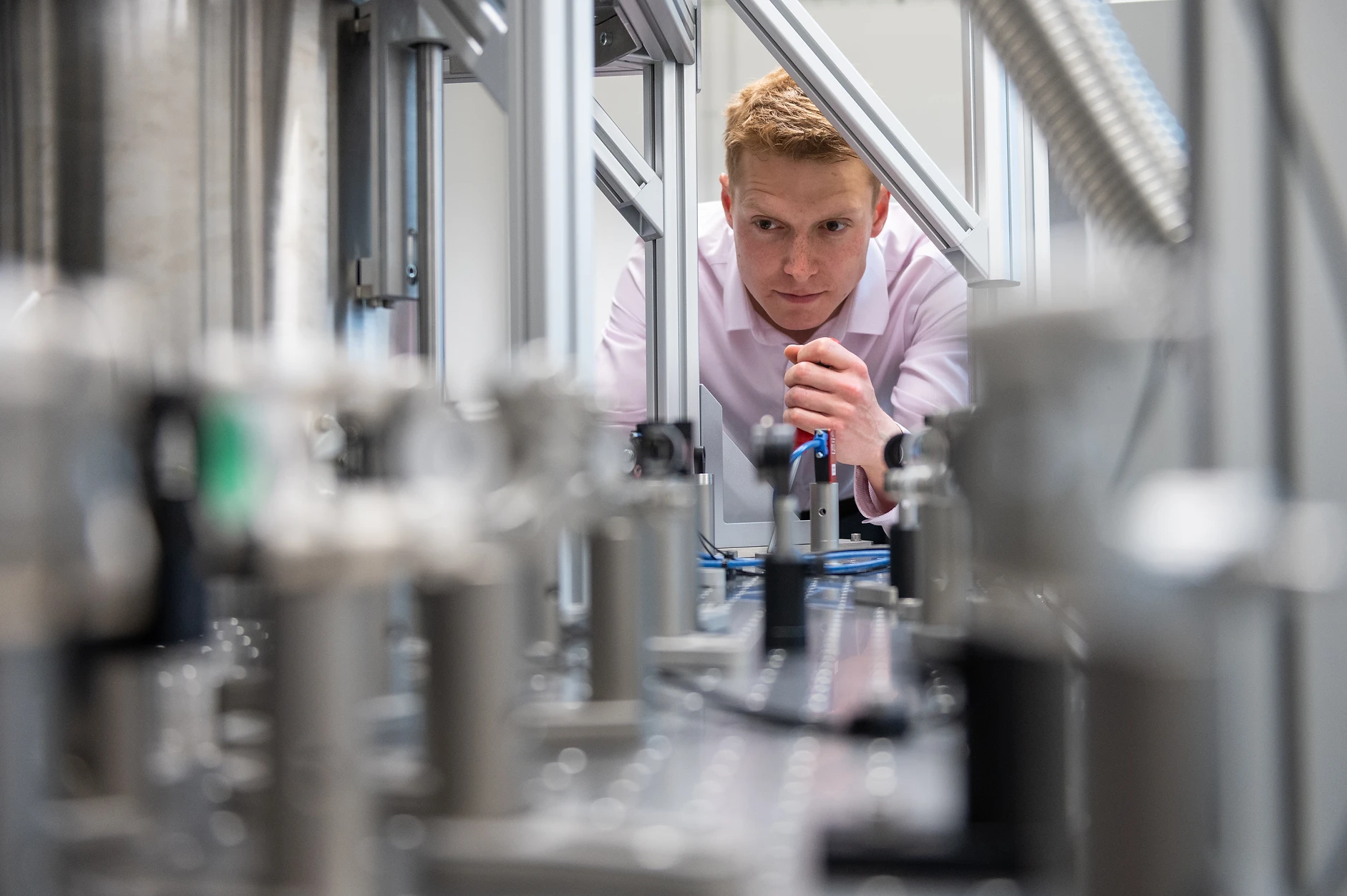Decoherence is a major challenge to commercializing quantum computers. To this end, several companies are experimenting with manufacturing methods that guarantee high coherence times and fidelity. This week, we bring you Oxford Ionics, a UK-based quantum company that combines trapped ion technology, photonic, and microwave technology to create a quantum computer with a long coherence time and high fidelity.
Who are Oxford Ionics?
Oxford Ionics was founded in 2019 by Chris Ballance and Tom Harty, PhD graduates from the University of Oxford. The founders combined their individual experiences in trapped ion and Electronic Qubit Control to create a quantum computer with world records for the greatest performance quantum operations, longest quantum coherence time, and highest performance quantum network.
Oxford Ionics is based in Begbroke, United Kingdom, with 11-50 employees.
What Is Oxford Ionics Doing?
Oxford Ionics is developing high-performance quantum computers by integrating the finest qubits – trapped ions – with their noiseless electronic qubit control technology. Their atomic qubits consist of ions trapped on the surface of a microchip and manipulated using photonic and microwave technologies. They are developing the first technologies to help solve real-life problems.
Funding
In June 2020, Oxford Ionics raised £2.7M in a seed round led by Amos Ventures and two other investors and got a £1.7M grant in August. Its last funding was a £2.9M grant in August 2021.
Oxford Ionics Partnership
Oxford Ionics entered a partnership with Infineon Technologies AG to develop high-performance, fully integrated quantum processing units. Oxford Ionics will combine its Electronic Qubit Control (EQC) technology with Infineon’s engineering and manufacturing skills and quantum technology experience.
By 2022, the first Oxford Ionics devices will be cloud-accessible, giving users access to these cutting-edge quantum computers. Their goal is to build fully integrated devices capable of scaling to hundreds of qubits in less than two years and pave the way for the commercial manufacture of QPUs with hundreds of qubits within the next five years.
About The Founders
Chris Ballance, Co-founder of Oxford Ionics, earned a PhD in Physics from the University of Oxford, where he focused on Trapped Ion Quantum computing. He worked as a senior researcher at the university and became a Future Leaders fellow in 2019.
Tom Harty also earned a PhD in Physics from the University of Oxford. He served as a Junior research fellow, where he studied scalable techniques for quantum computing using trapped ions. He furthered his research on the technology while he was a member of the Networked Quantum Information Technology (NQIT) hub.
Trapped Ion Technology
Trapped ion technology is a technique for storing and manipulating quantum information. It is a form of quantum computing that uses ions (charged atoms) as quantum bits (qubits). Ions can be confined in three-dimensional traps held at precise locations by an electric field. This allows them to be manipulated by external magnetic fields, lasers, or microwave radiation.
IonQ uses the same technology. At the core of their devices are ionized ytterbium atoms trapped in 3D to function as qubits. Their newest device IonQ Aria which is available on Microsoft Azure, has 23 qubits and can run hundreds of quantum gates using a single algorithm.
In July 2022, Quantinuum hit a breakthrough in trapped ions by moving two different types of ions, ytterbium and barium ions, through a junction in a surface trap, a tiny electrode-filled device at the heart of trapped ion quantum computers, without the charged particles becoming overly excited or flying out of the trap.
Trapped ions have been shown to carry out simple logic operations with high fidelity, approaching the theoretical limit of error-free operation. It is one of the most promising candidates for commercializing quantum computers.

